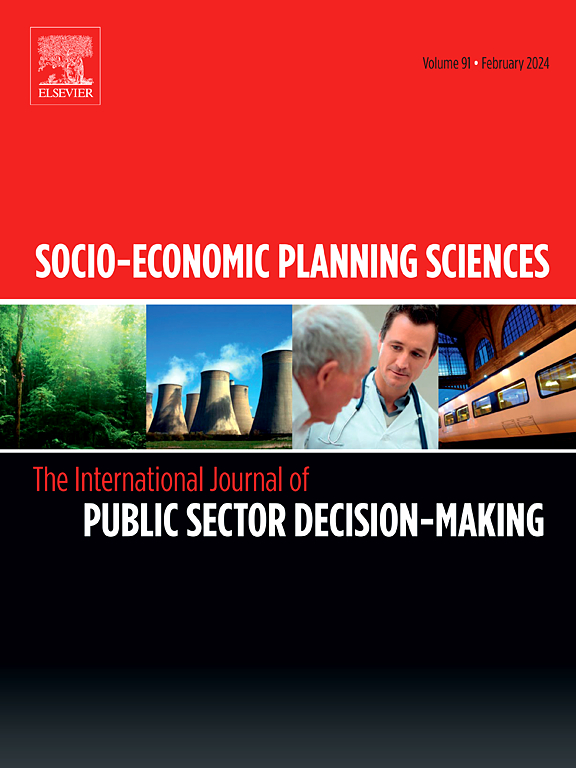What about QR codes on wine bottles? A statistical analysis of technology's influence on purchase decisions among Italian wine consumers
IF 6.2
2区 经济学
Q1 ECONOMICS
引用次数: 0
Abstract
The growing significance of information availability about products for consumers represents a pivotal dimension in contemporary consumer behavior and decision-making processes. In the context of an ever-evolving global marketplace characterized by a huge number of choices, rapid technological advancements and increased consumer awareness, access to comprehensive product information has emerged as a fundamental factor affecting consumers' preferences, choices, and satisfaction levels. There is a significant scientific gap on Italian wine consumers' readiness to adopt emerging technologies. Therefore, the research objective is to investigate whether Italian wine consumers trust and are willing to use emerging technologies such as Quick Response (QR) code and Blockchain Technology (BCT) and to identify the factors influencing their acceptance. By examining and evaluating several crucial aspects in the context of wine purchases in Italy using an online survey, this work seeks to fill the gap in the literature. These crucial elements include customers' propensity for novelty, information-seeking behaviors, faith in new technology, and the intention to use them during wine purchasing. What can be derived is the positive interconnection between consumers novelty-seeking, information-seeking, intention to use the QR code and trust in emerging technologies. With other words, consumers' information-seeking and novelty-seeking is interconnected and they positively determine consumers trust in technologies and their adoption. The implications of this study are twofold. Firstly, it enriches consumer behavior theory by providing new insights into how information availability and emerging technologies influence consumers’ decision-making processes, particularly in the context of the Italian wine market. Secondly, businesses can leverage these insights to enhance consumer trust and satisfaction, enabling them to make more effective marketing strategies, improve product transparency, and gain a competitive edge in the increasingly competitive wine market.
酒瓶上的二维码如何?技术对意大利葡萄酒消费者购买决策影响的统计分析
在当代消费者行为和决策过程中,产品信息对消费者的重要性日益凸显。在选择繁多、技术进步迅速、消费者意识增强的不断发展的全球市场背景下,获取全面的产品信息已成为影响消费者偏好、选择和满意度的基本因素。关于意大利葡萄酒消费者采用新兴技术的准备情况,在科学上还存在很大差距。因此,本研究旨在调查意大利葡萄酒消费者是否信任并愿意使用快速反应代码(QR)和区块链技术(BCT)等新兴技术,并确定影响其接受程度的因素。通过使用在线调查对意大利葡萄酒购买中的几个关键方面进行研究和评估,这项工作力图填补文献空白。这些关键因素包括顾客的新奇倾向、信息搜索行为、对新技术的信心以及在购买葡萄酒时使用这些技术的意愿。可以得出的结论是,消费者的新奇寻求、信息寻求、使用二维码的意向和对新兴技术的信任之间存在正相关。换句话说,消费者的信息寻求和新奇感寻求是相互关联的,它们积极地决定了消费者对技术的信任和采用。本研究有两方面的意义。首先,它丰富了消费者行为理论,提供了关于信息可用性和新兴技术如何影响消费者决策过程的新见解,特别是在意大利葡萄酒市场的背景下。其次,企业可以利用这些见解来提高消费者的信任度和满意度,从而制定更有效的营销策略,提高产品透明度,在竞争日益激烈的葡萄酒市场中获得竞争优势。
本文章由计算机程序翻译,如有差异,请以英文原文为准。
求助全文
约1分钟内获得全文
求助全文
来源期刊

Socio-economic Planning Sciences
OPERATIONS RESEARCH & MANAGEMENT SCIENCE-
CiteScore
9.40
自引率
13.10%
发文量
294
审稿时长
58 days
期刊介绍:
Studies directed toward the more effective utilization of existing resources, e.g. mathematical programming models of health care delivery systems with relevance to more effective program design; systems analysis of fire outbreaks and its relevance to the location of fire stations; statistical analysis of the efficiency of a developing country economy or industry.
Studies relating to the interaction of various segments of society and technology, e.g. the effects of government health policies on the utilization and design of hospital facilities; the relationship between housing density and the demands on public transportation or other service facilities: patterns and implications of urban development and air or water pollution.
Studies devoted to the anticipations of and response to future needs for social, health and other human services, e.g. the relationship between industrial growth and the development of educational resources in affected areas; investigation of future demands for material and child health resources in a developing country; design of effective recycling in an urban setting.
 求助内容:
求助内容: 应助结果提醒方式:
应助结果提醒方式:


